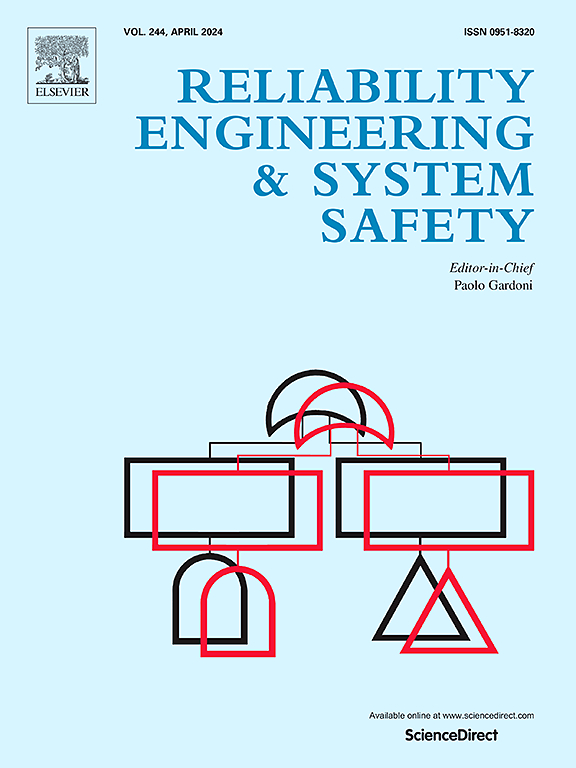Two-stage stochastic optimization of passenger evacuation routes in metro stations considering stampede incidents
IF 9.4
1区 工程技术
Q1 ENGINEERING, INDUSTRIAL
引用次数: 0
Abstract
Stampede incidents frequently occur in densely populated metro stations during emergencies, and if not promptly addressed, they can cause more severe cascading effects, resulting in passenger injuries and even deaths. To address this issue, this study proposes a two-stage stochastic optimization model that incorporates the occurrence of unpredictable stampedes to effectively plan individualized evacuation routes for passengers. The model aims to minimize evacuation time by optimizing both the initial evacuation routes of passengers and the subsequent routes after stampede incidents, thereby mitigating passenger congestion in bottleneck areas and providing passengers with alternative destinations. By introducing auxiliary variables, the model is reformulated to reduce the constraints. The model is tested under various stampede scenarios. The results indicate that the proposed optimization strategy can significantly reduce evacuation time, as well as the density in bottleneck area of the metro station, regardless of the severity of stampede incidents. Via comprehensive sensitivity analysis, the critical factors having a significant impact on the evacuation process have been identified. This finding is expected to provide valuable insights for regulatory agencies in the effective implementation of evacuation strategies.
考虑踩踏事件的地铁车站乘客疏散路线两阶段随机优化
在紧急情况下,踩踏事件经常发生在人口密集的地铁站,如果不及时处理,可能会造成更严重的连锁效应,导致乘客受伤甚至死亡。为了解决这一问题,本研究提出了一种考虑不可预测踩踏事件发生的两阶段随机优化模型,有效地为乘客规划个性化的疏散路线。该模型旨在通过优化踩踏事件发生后乘客的初始疏散路线和后续疏散路线,最大限度地缩短疏散时间,从而缓解瓶颈区域的乘客拥堵,为乘客提供可选择的目的地。通过引入辅助变量,对模型进行重新表述,减少约束条件。该模型在各种踩踏场景下进行了测试。结果表明,无论踩踏事件的严重程度如何,所提出的优化策略都能显著缩短疏散时间,并降低地铁站点瓶颈区域的密度。通过综合敏感性分析,确定了对疏散过程有重大影响的关键因素。这一发现有望为监管机构有效实施疏散策略提供有价值的见解。
本文章由计算机程序翻译,如有差异,请以英文原文为准。
求助全文
约1分钟内获得全文
求助全文
来源期刊

Reliability Engineering & System Safety
管理科学-工程:工业
CiteScore
15.20
自引率
39.50%
发文量
621
审稿时长
67 days
期刊介绍:
Elsevier publishes Reliability Engineering & System Safety in association with the European Safety and Reliability Association and the Safety Engineering and Risk Analysis Division. The international journal is devoted to developing and applying methods to enhance the safety and reliability of complex technological systems, like nuclear power plants, chemical plants, hazardous waste facilities, space systems, offshore and maritime systems, transportation systems, constructed infrastructure, and manufacturing plants. The journal normally publishes only articles that involve the analysis of substantive problems related to the reliability of complex systems or present techniques and/or theoretical results that have a discernable relationship to the solution of such problems. An important aim is to balance academic material and practical applications.
 求助内容:
求助内容: 应助结果提醒方式:
应助结果提醒方式:


